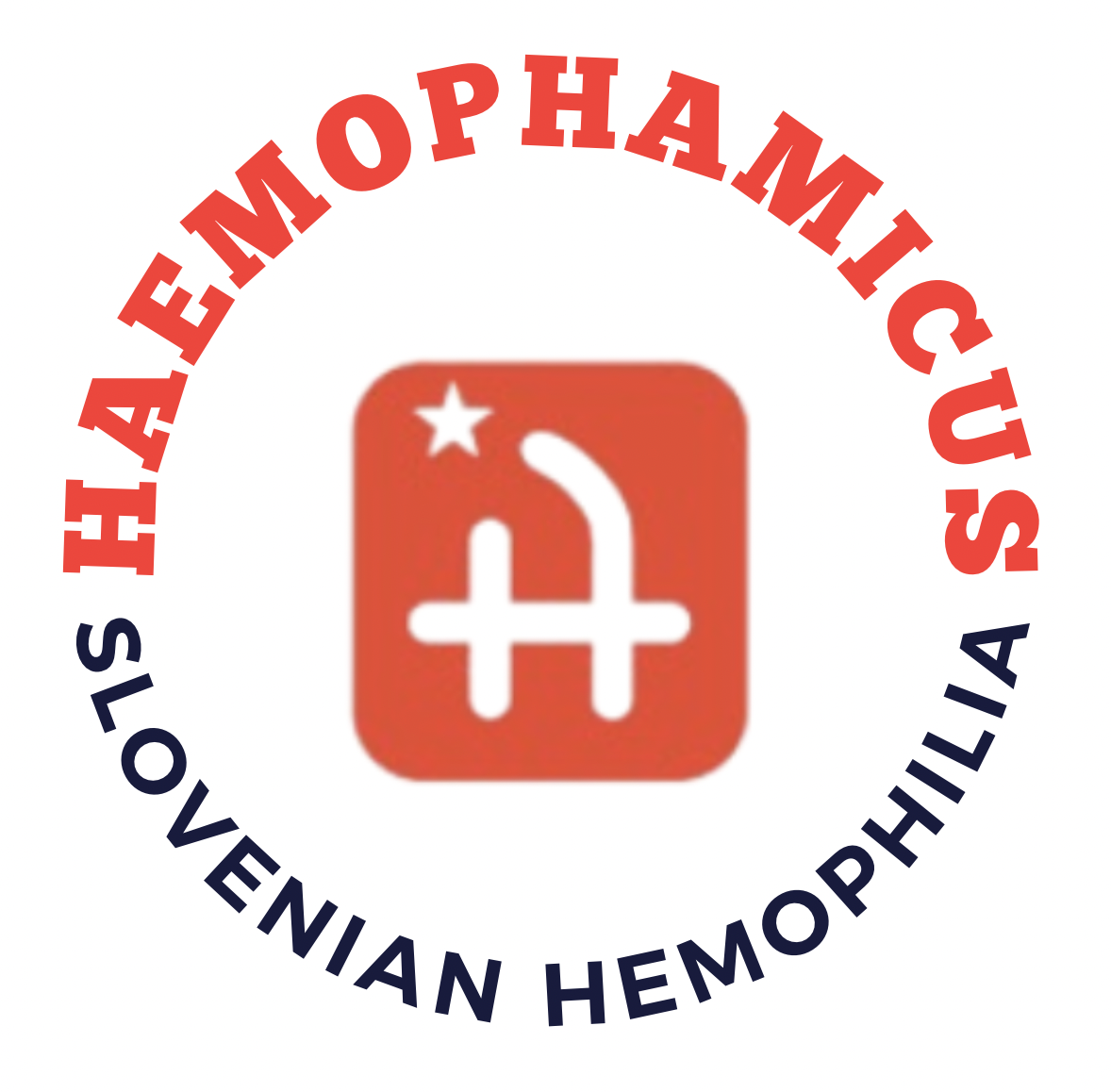A Hemophiliac goes to Zagreb!
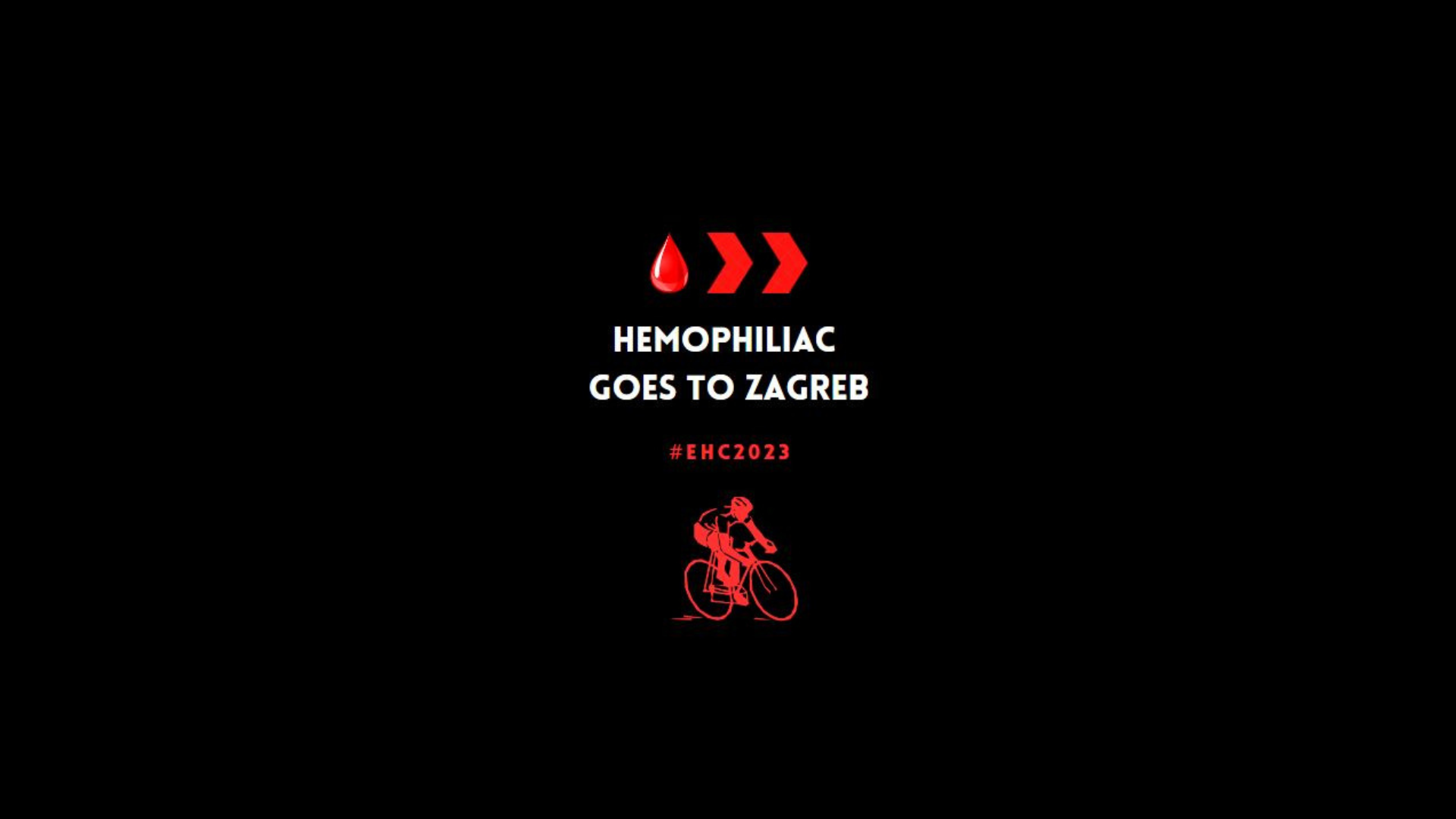
The first stage between Ljubljana, Vrhnika, and neighbouring towns took place as early as June. The course was chosen because there is a bicycle lane connecting the two towns for most of the journey making it easier to avoid traffic, and because the route is flat and suitable also for haemophiliacs. The only thing to occasionally watch out for is sand that has accumulated on the road, which requires you to be more careful when braking. For this cycling stage, I opted for the 1985 Rog Maraton specialised road bike, which spurred me on to undertake new cycling challenges. A bike I’m sure you’ll hear more about. I’ll just mention that the HaemophAmicus Club is using it as part of its upcoming recreation project called #RedHemophiliaBike. That day, the red haemophiliac bike passed the almost 60-kilometre long test with flying colours.
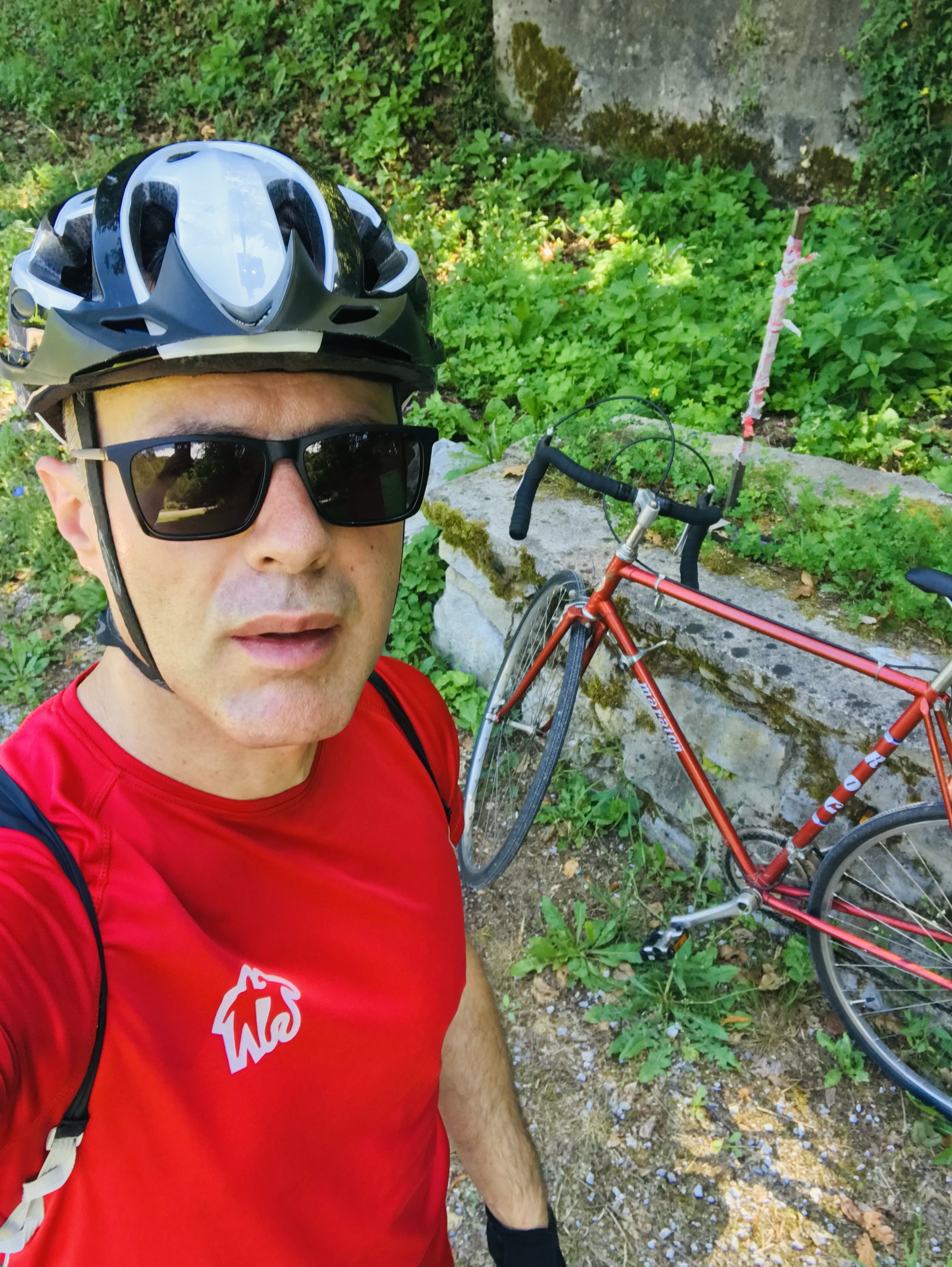
The second stage route ran between Kranjska Gora, Planica, the Fusine Lakes, and Tarvisio on the Italian side of the border. I set off with two eager teenagers, full of cycling energy. We decided on standard road bikes because of the bike path running along the majority of the course, except for the ordinary regional road you have to take to see the ski jump ramps in Planica and the Fusine Lakes. The haemophiliac (yours truly) was well stocked with clotting factor concentrate and I was also able to monitor its levels via the MyWapps and Florio apps, which in my opinion are two of the best health aids ever developed for people suffering from haemophilia.
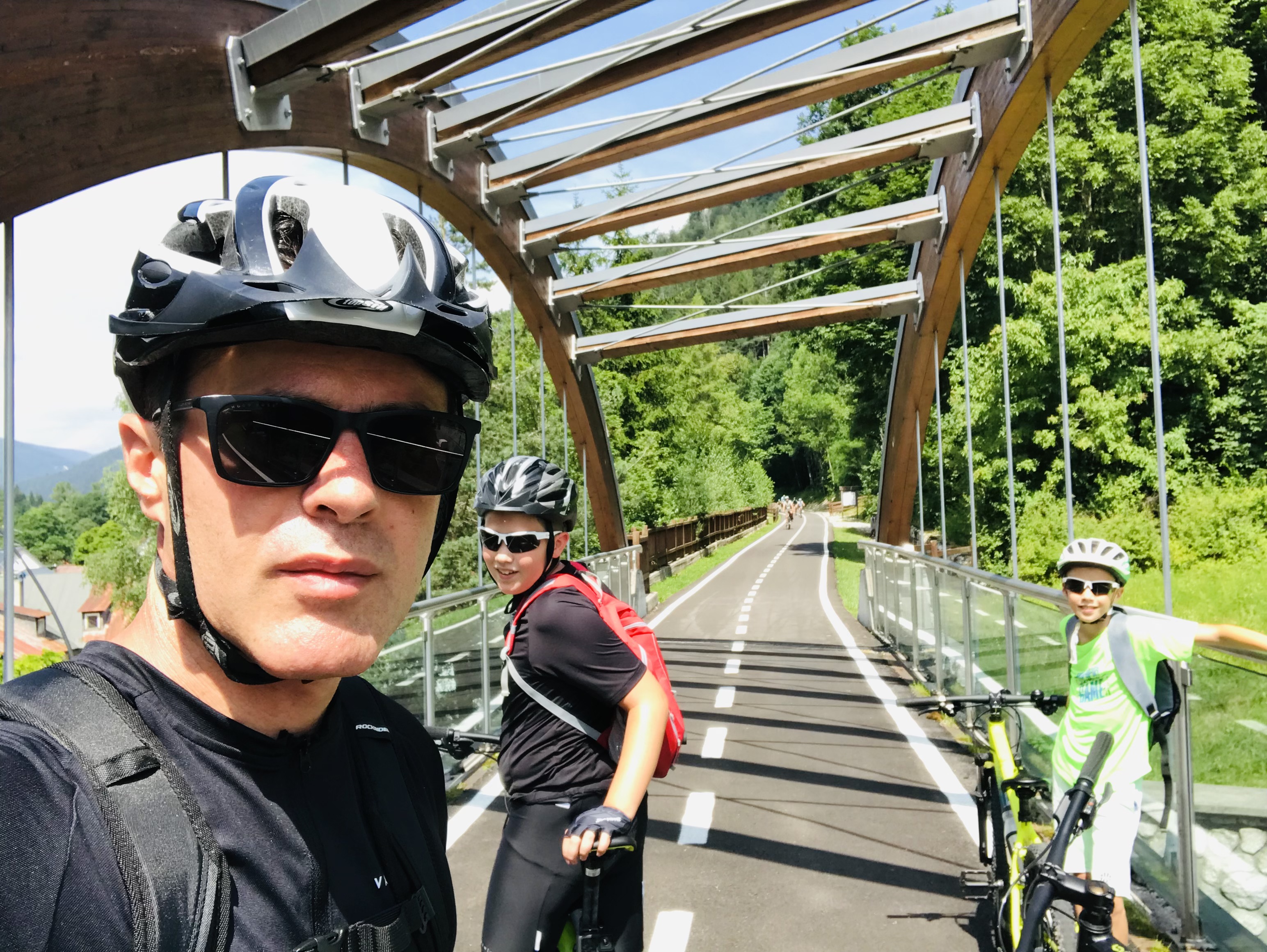
The day was simply made for cycling. The course was perfect and both teenagers at times significantly too fast to have any hope of catching up with them, let alone racing them. Competing wasn’t the point anyway. After arriving in Tarvisio, we decided to extend our journey in the direction of Monte Santo di Lussari. I sincerely recommend this path to other haemophiliacs that like cycling. It’s very safe and only rarely crosses other routes. You nevertheless do have to mind other cyclists a bit, as it tends to become somewhat crowded during summer months. The course was smooth sailing on our way back as well, up until we started the difficult ascent to the Fusine Lakes when the youngsters started to run out of steam a bit. It’s here that the haemophiliac’s decent fitness, stubbornness, and relentlessness, despite his approaching “Club 50” age, came to the fore, helping him arrive first at the lakes. Of course any difficult ascent is followed by a much easier descent; however, the twists and turns in the road combined with oncoming traffic can present a serious danger to cyclists going down-hill quickly. Next up was the somewhat easier ascent to the Planica Valley. However, after noticing that the team energy was starting to wane a bit, we completed our “photo-shoot” and safely headed to our starting point in Kranjska Gora – very satisfied with covering 70 km that day. Well, seventy, that’s almost half-way to the 150 kilometres to Zagreb, right?

Like the second, the third stage also took place in July. Only this time, the Posočje route spanned the distance between Gorica, Solkan, and Kanal ob Soči. The new footbridge over the Soča River really makes this a one-of-a-kind cycling path, which is why I highly recommend it to any haemophiliac who enjoys a good bike ride. You can expect some ups and downs along the way and only one short section where you need to dismount for a few dozen metres to cross under a railway bridge. Despite the heat during the height of summer, you can still feel the refreshing waves of cool air along the route coming from the Soča River and the forests of Posočje. The whole course was covered using mountain bikes and the final distance was a not too shabby 50 kilometres.

The end of July was a really great time to go cycling and the Upper Posočje Region offers some stellar cycling paths. One of them lies between the starting point for the Boka Waterfall and Bovec, passing through Čezsoča and the confluence of the Soča River and the Gljun Stream, which served as the setting for a scene in the second Chronicles of Narnia movie. The asphalt-and-macadam road was not overly demanding. There is a slight ascent between Čezsoča and Bovec, but it shouldn’t pose much difficulty even for the average cyclist. Since the surroundings offer many possibilities for cycling adventures, the fourth stage concluded after the Zagreb-bound haemophiliac finished an almost 40-kilometre “warm-up” on his mountain bike.
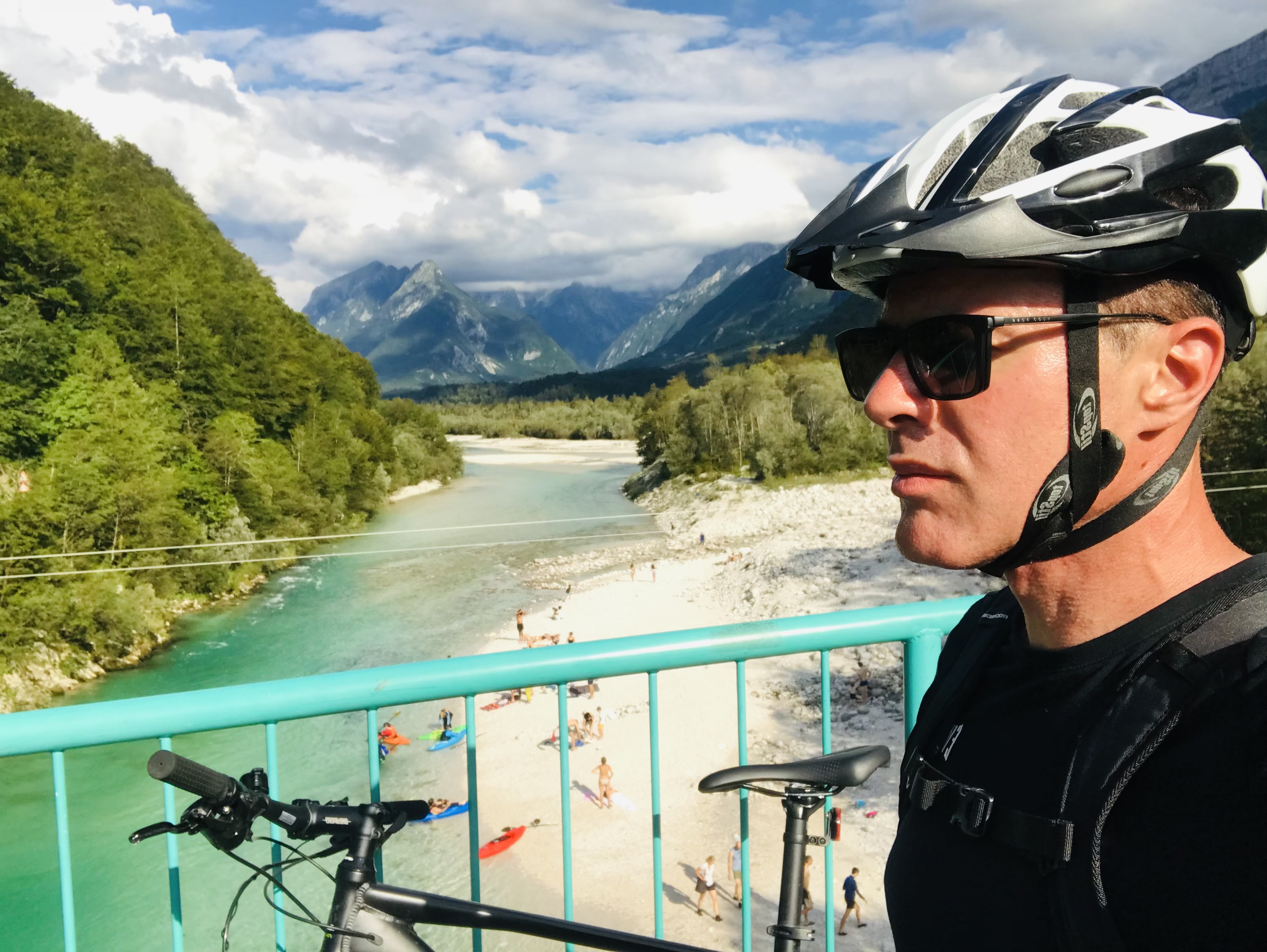
The beginning of August
brought with it a new, fifth stage, that took place in the mountains and proved
to be the most difficult yet. The descent from Pokljuka to the Uskovnica plain
followed a forested, macadam road. Because of the copious rainfall in Slovenia
a few days prior, the route turned out to be extremely demanding and literally
torn up in places, making it difficult to use, even with a mountain bike. While
the route led downhill, there were a few steep and demanding climbs on the way
back. I would characterise this course as being quite difficult and would not
recommend it to haemophiliacs who are not in good cycling form. As the distance
of this part of the stage was rather short, we ventured further on to Bohinjska
Bistrica and its surroundings, finishing the day by once again covering a total
of 60 kilometres. We concluded that our physical fitness had already markedly
improved compared to previous stages.
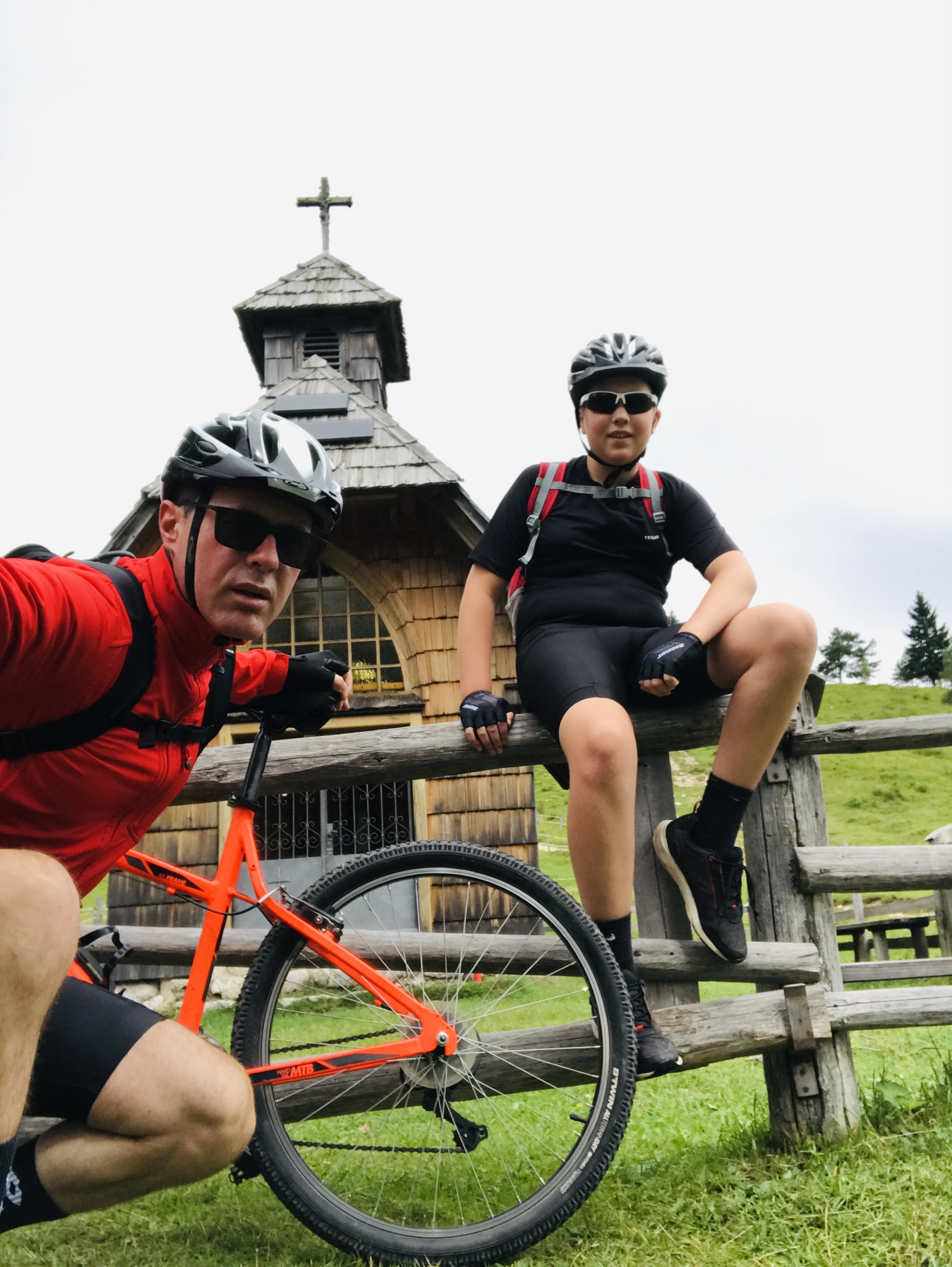
Stage 6 was more of an urban tour, winding through Ljubljana and its surroundings. It coincided with the arrival of our cycling champion Tadej Pogačar to Ljubljana’s Congress Square, which provided additional motivation. I have to say that Ljubljana is a very bicycle-friendly city with heaps of bike lanes and paths to choose from. I sometimes ride towards Šiška and Tacen or else towards Bežigrad, Domžale, Zalog, or Litija. My favourite is the Path of Remembrance and Comradeship, which I prefer to cover with my mountain bike. It is truly suitable for haemophiliacs, except perhaps the portion that leads to Golovec, which can be quite difficult; however, you can simply skip that part of the path.
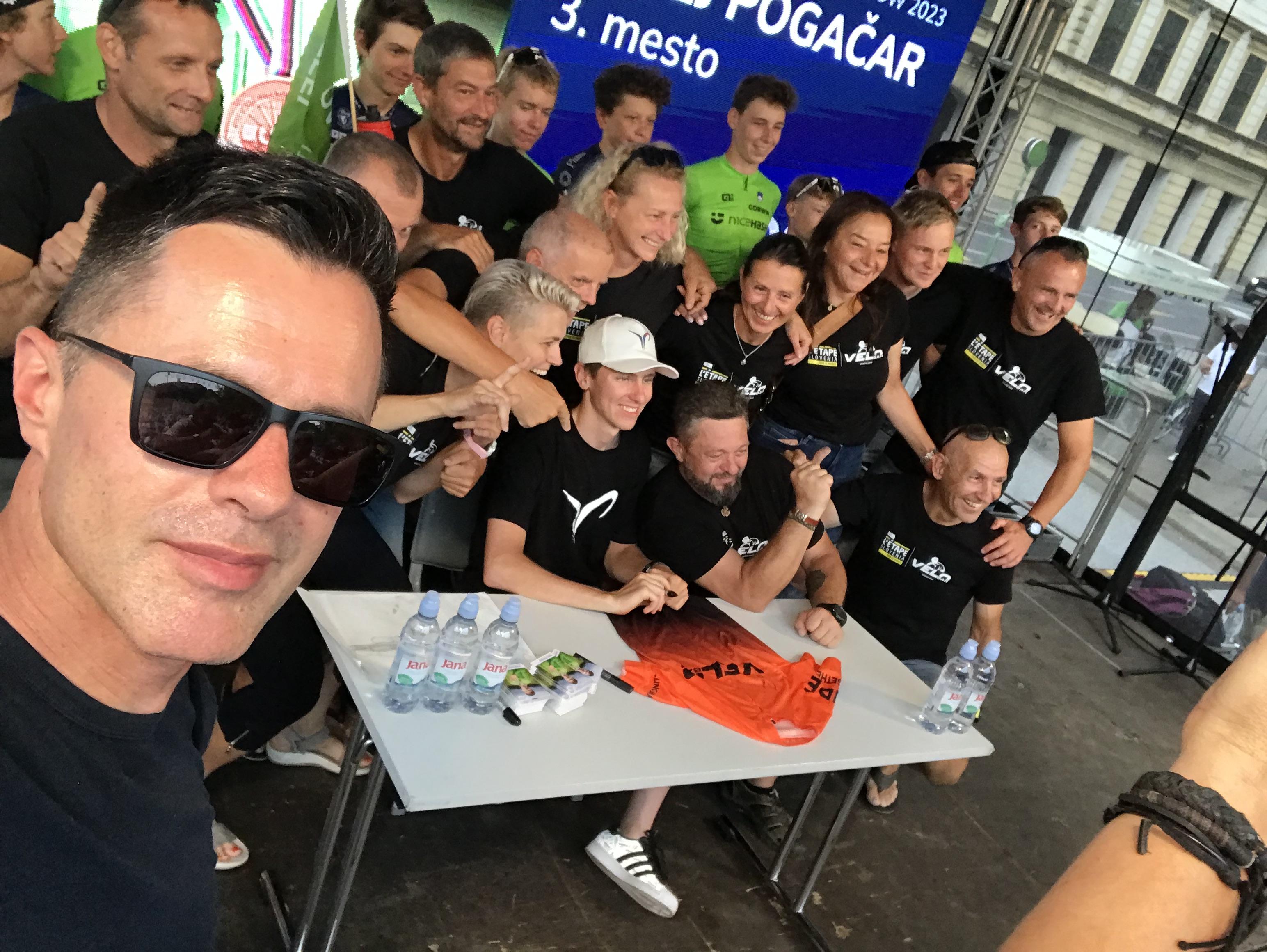
This time we decided to test specialised bicycles that left us speechless, particularly in terms of comfort and ease of riding. Tadej Pogačar made an appearance that day and shook hands and took photographs with a crowd of his fans. The event also raised money for the families and people affected by the recent floods in Slovenia. The cycling day concluded with an ascent to Ljubljana Castle, something that has turned into “a piece of cake”, especially with the specialized or mountain bike. I had already conquered this route in the past using the legendary Pony bike, which is equipped with just one gear. Oh, just so I don't forget, the mileage of the Ljubljana stage was a modest 30 kilometres.
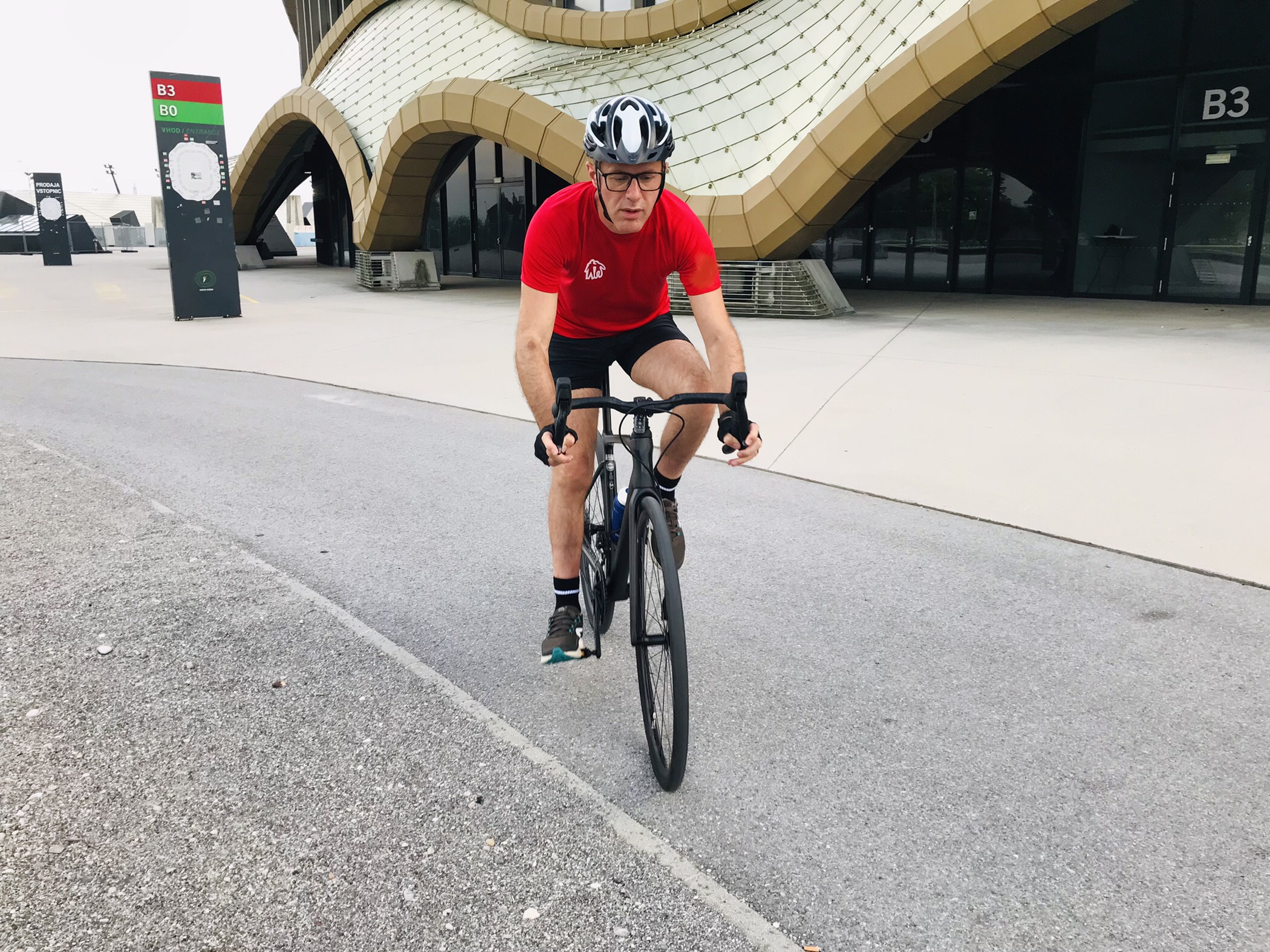
Stage 7 – Jesenice-Rateče, Slovenia
This time we loaded our specialised bikes on to a passenger train and tested the Slovene Railway’s “take your bike on the train” system. We found out it works really well, as the new Stadler trains have quite a bit of space for bicycles. Jesenice became the starting point for this new stage, and we continued our journey past Dovje and Mojstrana. There is a cycling path for most of the way; there’s only a short section before Dovje where you have to take a regional road. The cycling path is very well managed, but also has two relatively difficult hills with an incline of 15 to 17 degrees if I’m not mistaken.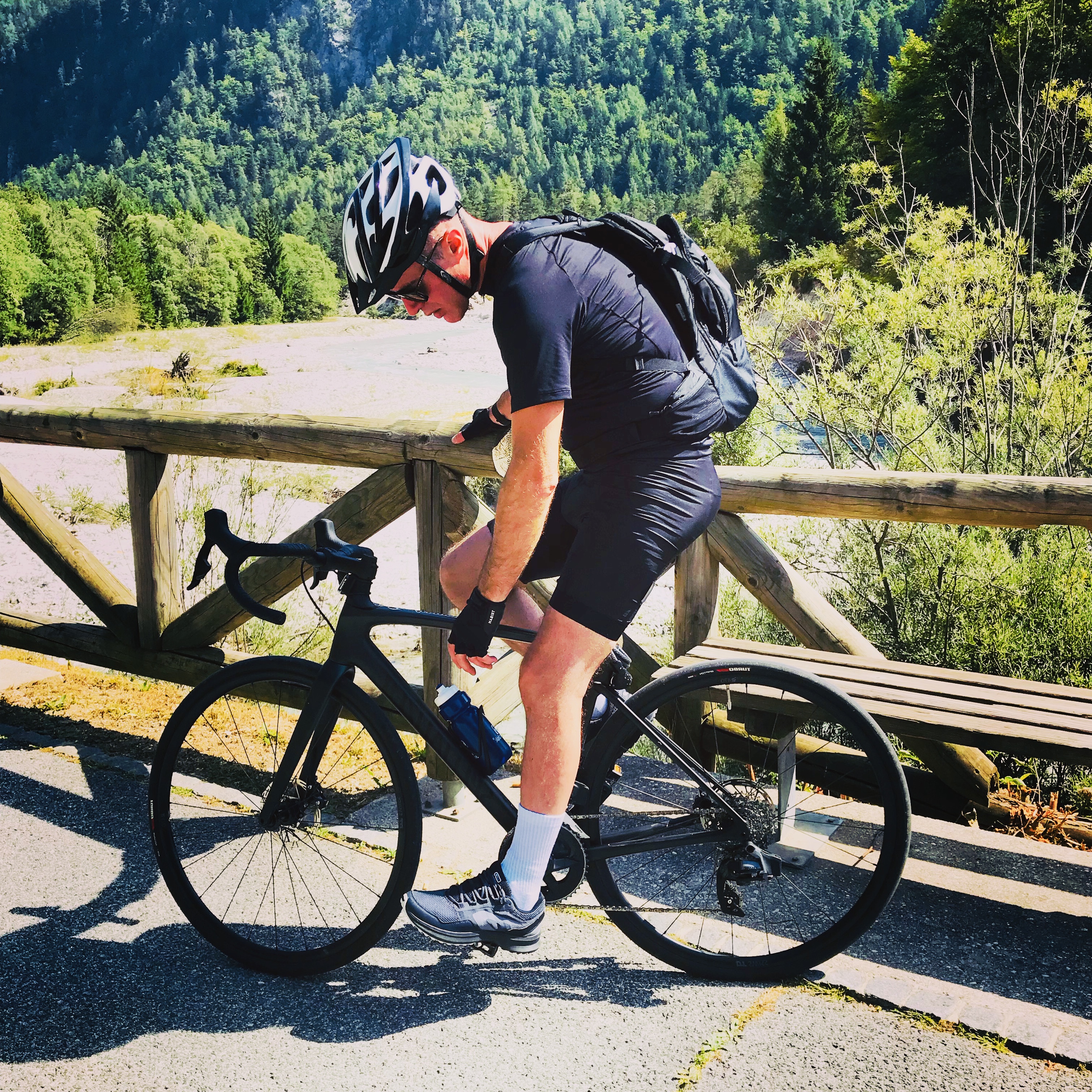
The rest of the path to Kranjska Gora is almost too ideal for road cycling. I highly recommend the cycling path between Dovje and Kranjska Gora to anyone with a clotting disorder who knows how to ride a bike. If you have a bit more training behind you, you can continue your journey along our (previously described) second stage (past Tarvisio and towards Udine) or cross into Austria and ride towards Villach.
Despite being recreational cyclists, our specialised bikes gave us an air of professionalism. We noticed how differently other road users see, accept, and greet a better equipped cyclist – something we were not used to from previous stages when riding mountain bikes.
Our overall achievement for this stage: 70+ kilometres and the decision to soon undertake a three-figure or 100 km journey.

At the tail end of summer, specifically at the start of September, we did the Mediterranean leg of our training. I was happy to complete Stage 8 in the company of my friend, fellow haemophiliac and Istrian Roberto. I did the Slovenian leg of the Parenzana Trail on my Rog Maraton bike, while Roberto used his specialised tricycle, which he diligently uses to train and collect kilometres following his recent knee surgery and rehabilitation. He has extraordinary willpower and motivation, something I would recommend to any haemophiliac seeking to pursue an active lifestyle and sport.
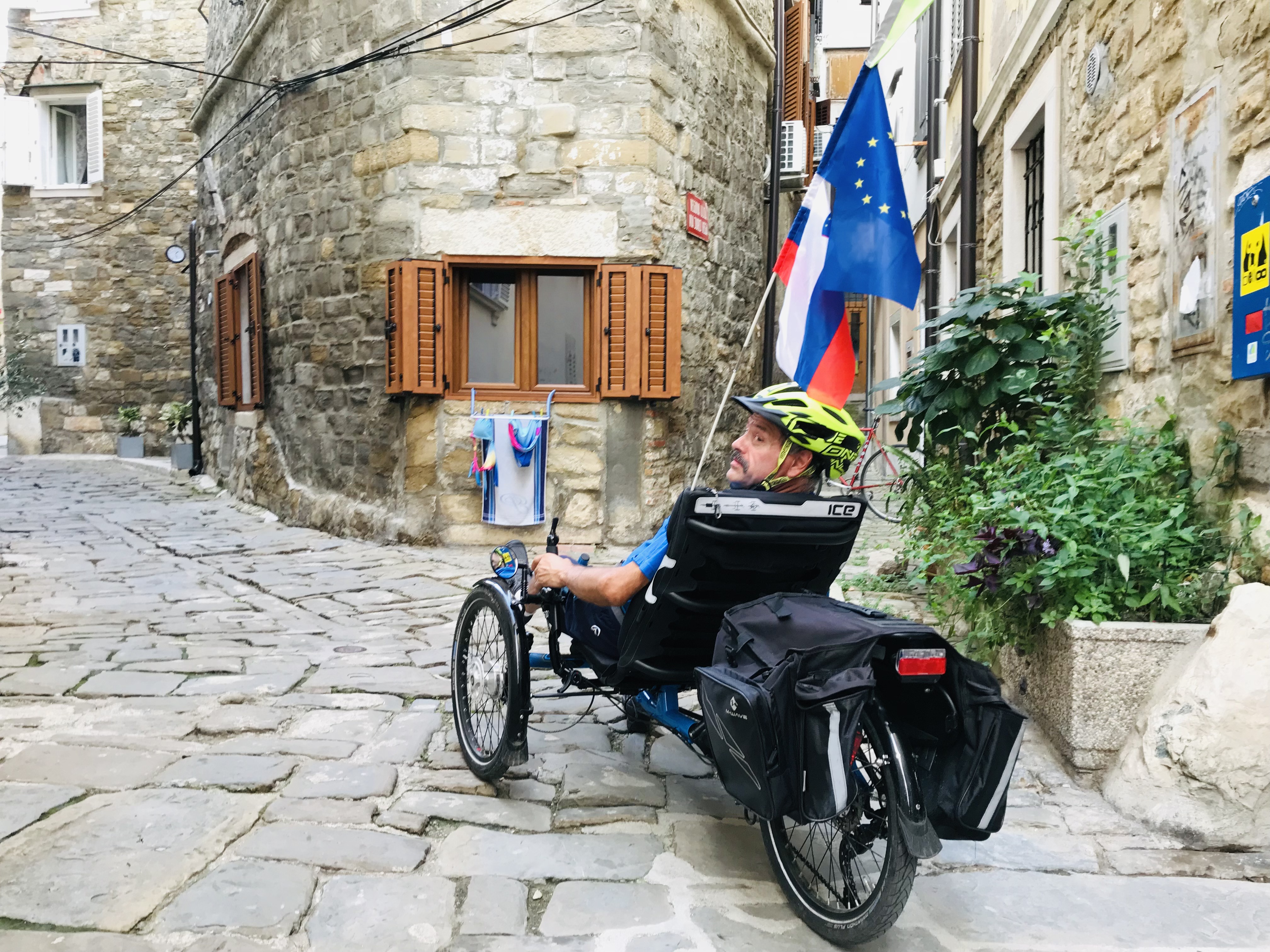
The route took us past Lucija, Portorož, Izola, along the coastal road (suitable for pedestrians and cyclists) towards Koper. I have to admit that I had to accelerate quite a bit at times to keep up with Roberto. His three-wheeled bike zooms like a “race car” and you can see how much physical progress Roberto has made since starting cycling. Respect!
The journey back from Koper took us along the same route, this time with stops in Izola and Piran where we took a few photos and agreed that we really need to go cycling again in the future. The distance? A good 60 kilometres, which we were both satisfied with. The whole route is suitable for haemophiliacs. It’s not too demanding, it passes along the coast, and is slightly dynamic, making it even more attractive.
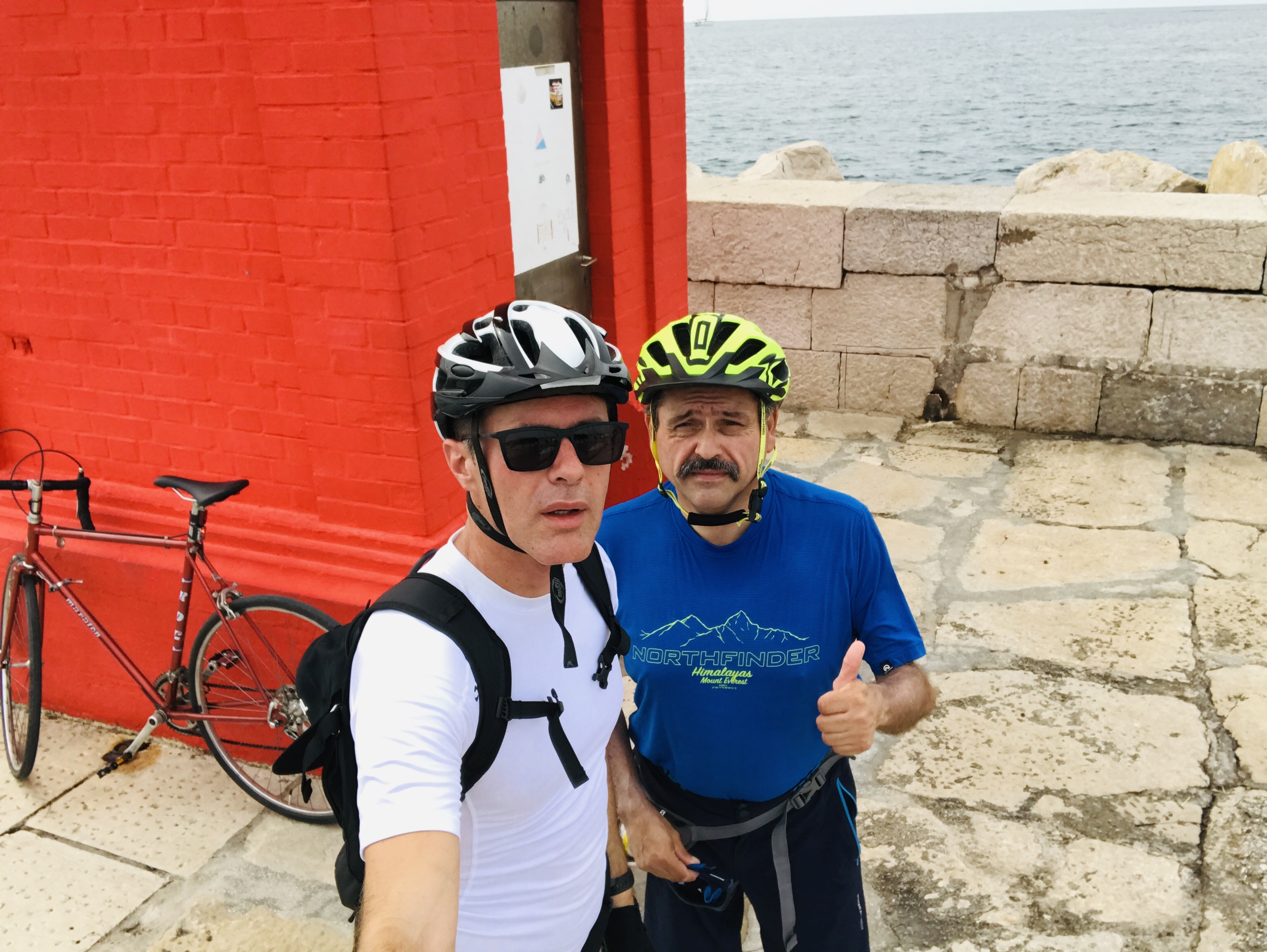
All in all, the sum of our stages on the road to Zagreb amounted to around 450 kilometres, which is three-times the distance between Ljubljana and Zagreb. But that wasn’t the end. The last stage was in the direction of Croatia and Zagreb itself, just before the start of the EHC conference.
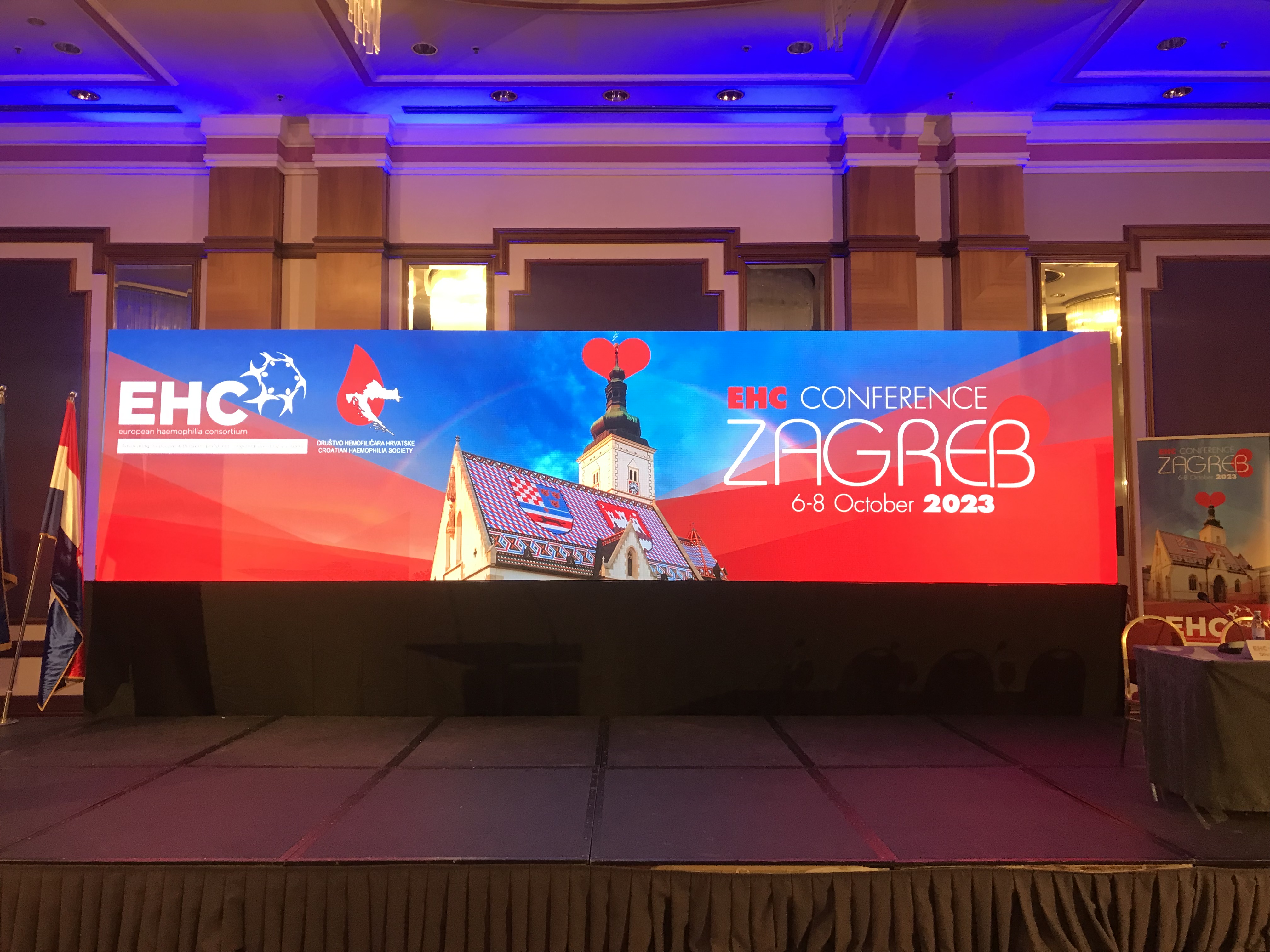
Stage 9 therefore started in Ljubljana and continued in Brežice. The journey to Zagreb required a bit more logistics, which translated into a more “sightseeing” stage, complete with visits to local points of interests and sights. Preparing media content during cycling is likewise time consuming and significantly easier with the help of another person or supporter and cycling enthusiast.

The path led me past the water tower in Brežice, and I made a short stop at the Brežice Castle, where you can see a silhouette of a bicycle, showing that Brežice and its residents are very cycling-aware.

Further on, the route took me across the border with Croatia to the town of Samobor, right at the foot of the local castle, which I intend to visit the next time I pass by. The town centre is adorned by an abundance of flowers, and numerous bridges along the local Gradna River.
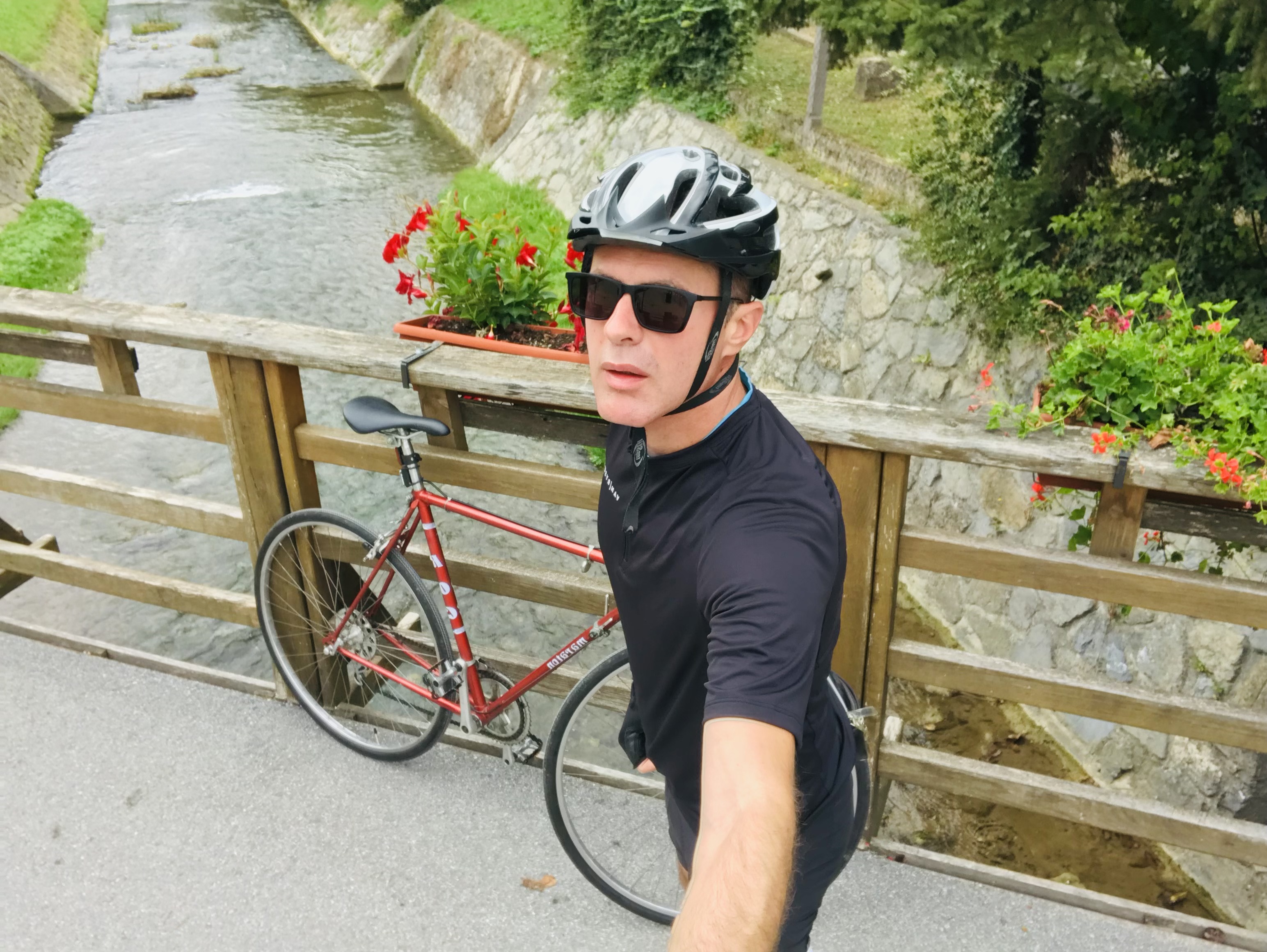
Samobor is also known for its cremeschnitte dessert, the original recipe for which has been preserved to this day. You may wonder what all of this has to do with haemophilia. Well, I once promised the president of the Croatian Haemophilia Society, who comes from Samobor, that I’d stop by one day in his hometown and “cheat” a bit on our diets with their traditional desserts (the cremeschnitte).
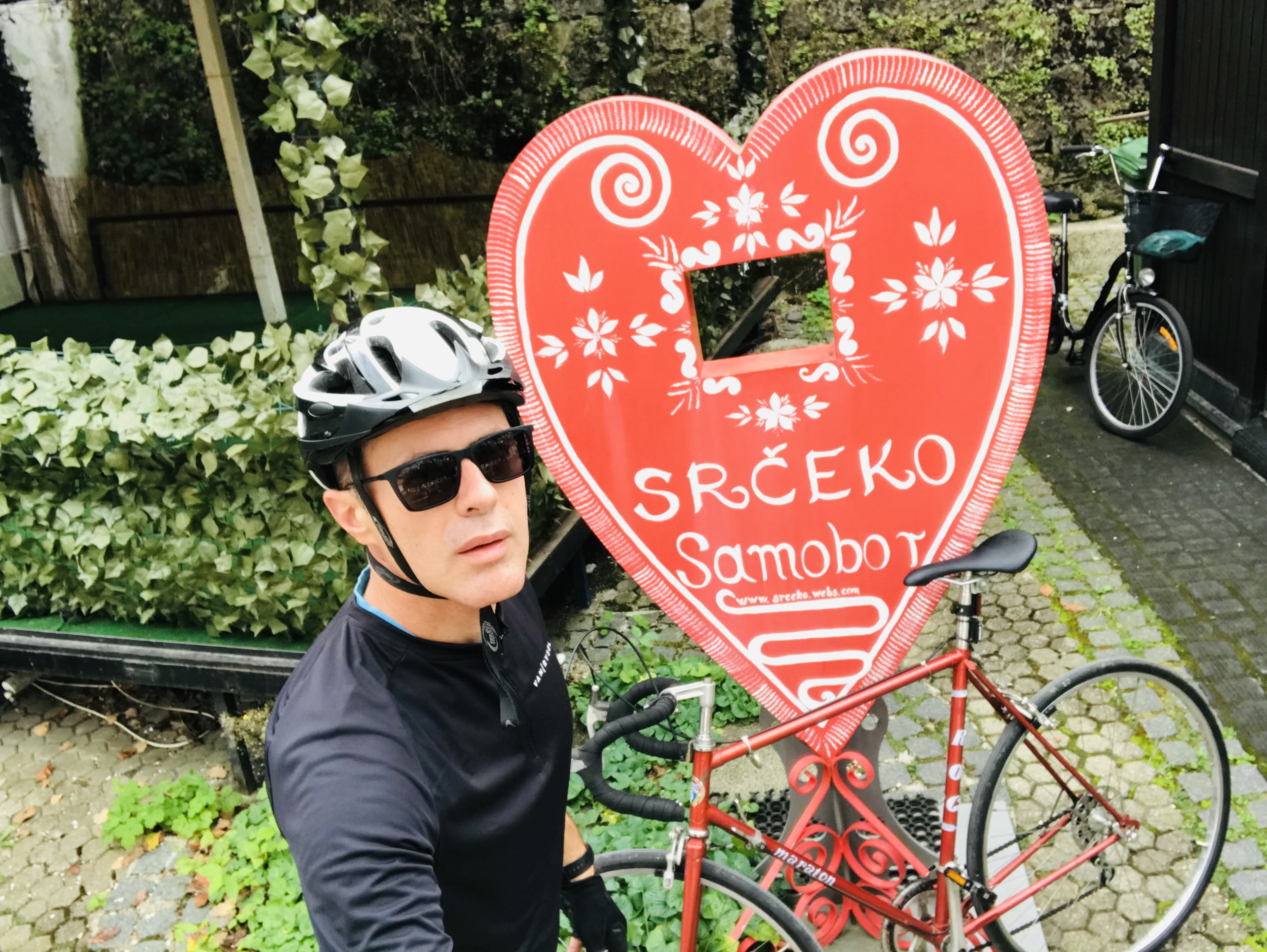
The rest of the route towards Zagreb was more or less flat and undemanding, but still had a lot of traffic, which I usually prefer to avoid (for safety’s sake) by following some local, lesser-known roads. On arriving in Zagreb, we of course had to stop at Banski Dvori...
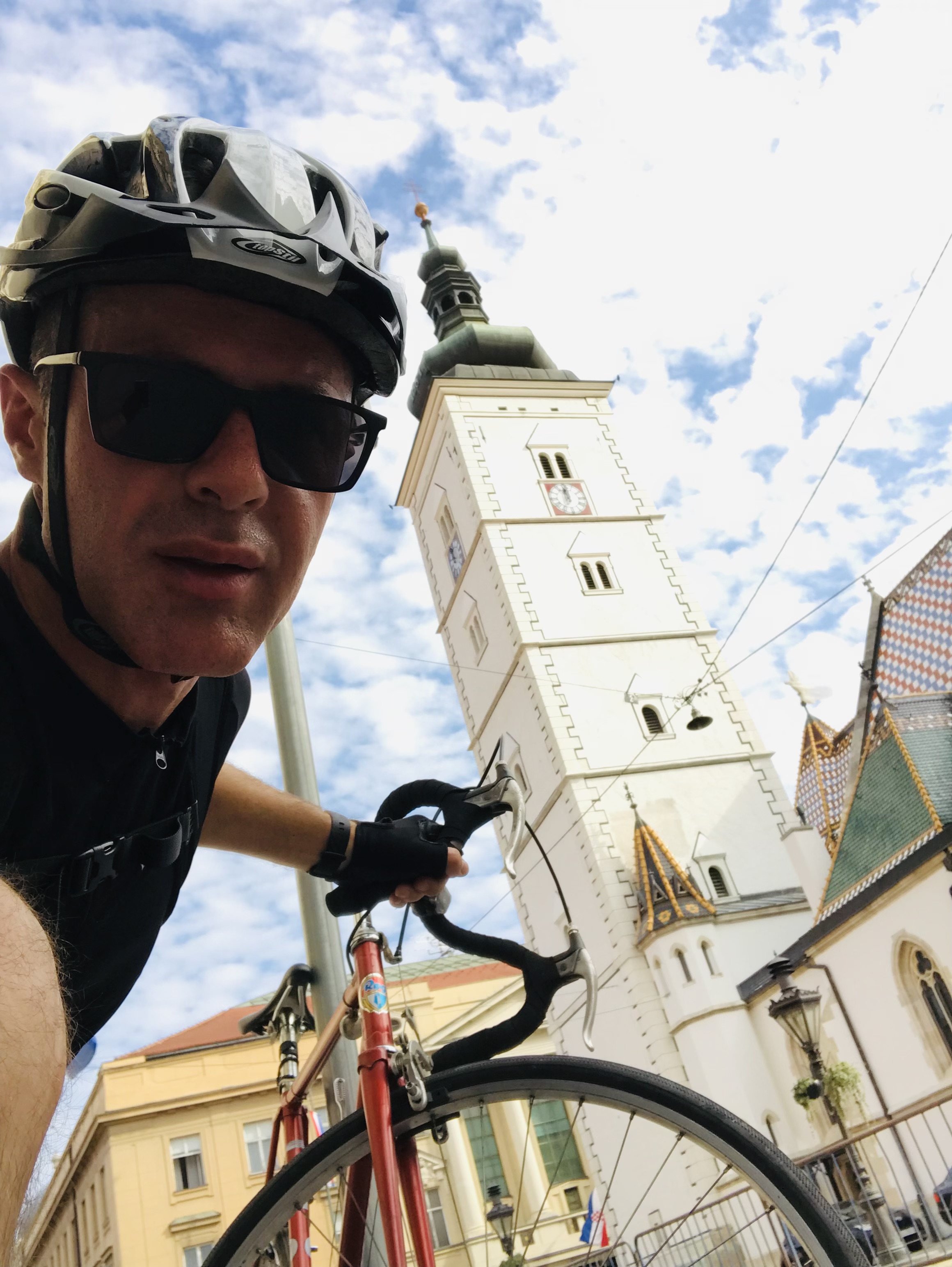
... and continue through the centre of the city by posing with a tie, which supposedly originates from Croatia.
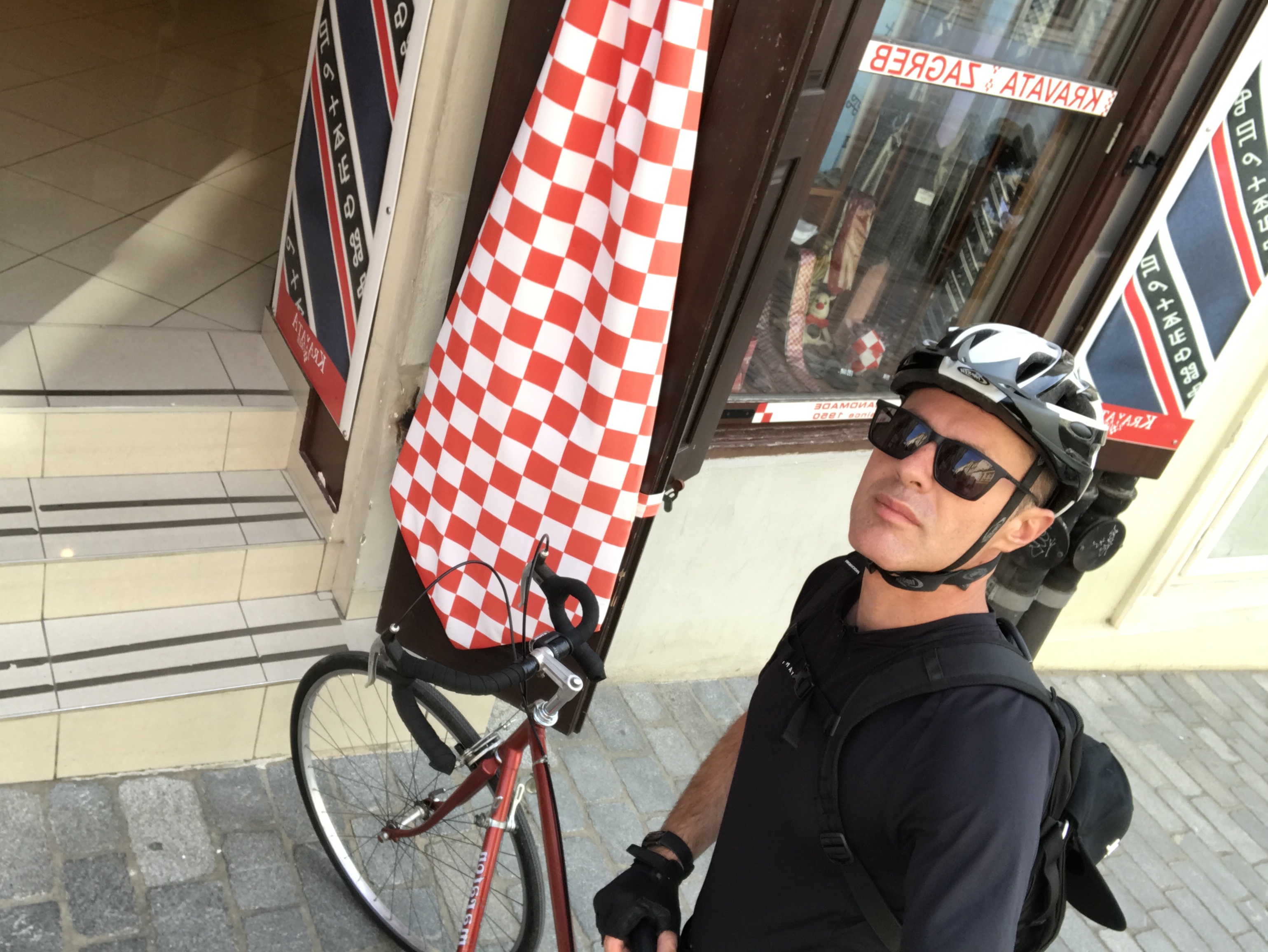
We also visited the main city square (Ban Jelačić Square), where some caution was necessary while riding, as the tram lines can be quite dangerous for cyclists. There’s no lack of these in Zagreb.
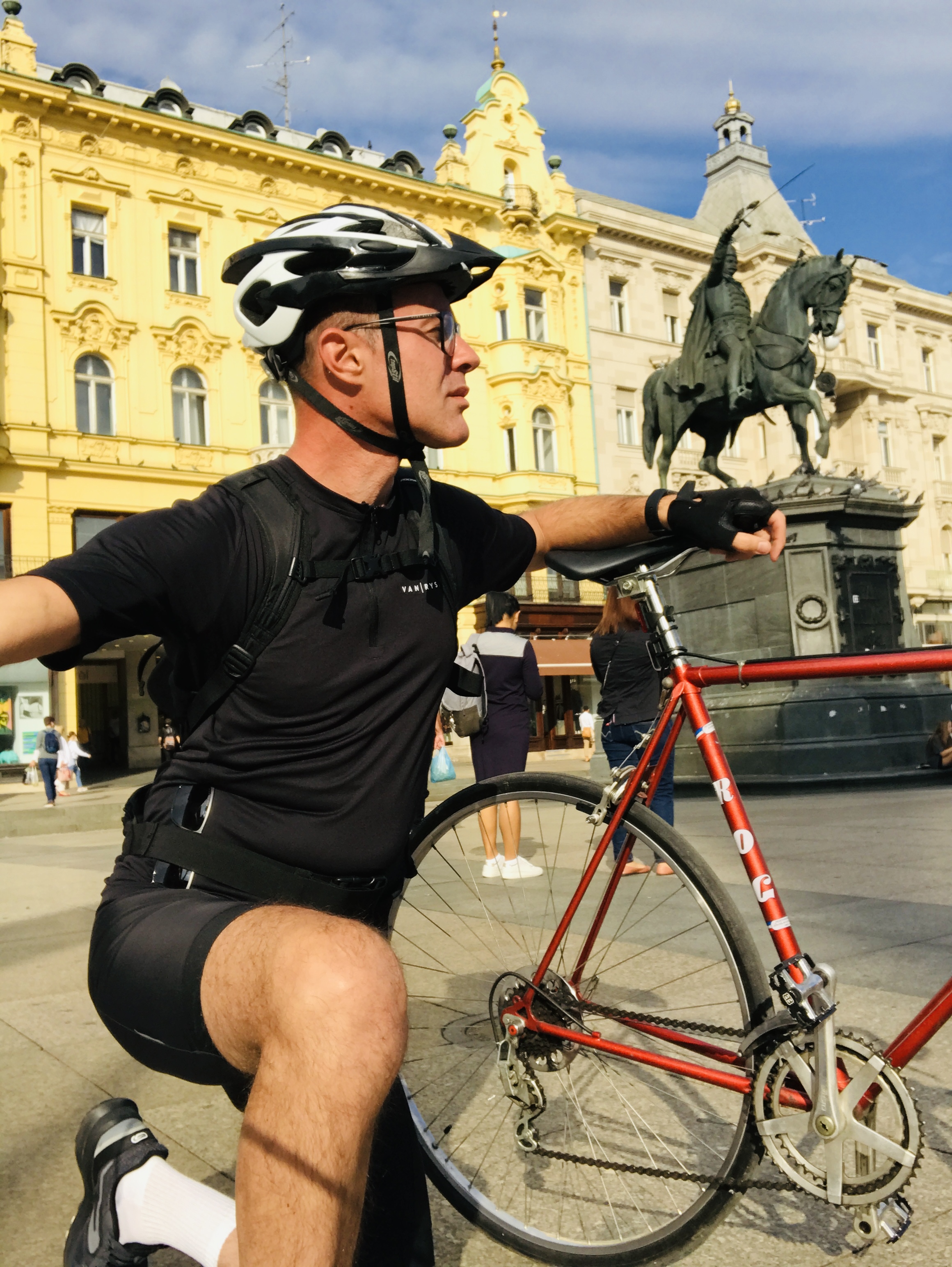
The goal of my summer challenge was the #EHC2023 Congress – held at The Westin hotel, where I arrived happily, without sustaining any injuries or bleeding throughout all the stages and actually in quite solid cycling shape for a recreational haemophiliac cyclist. I’ll certainly need to find a way to maintain my shape throughout the winter as well.
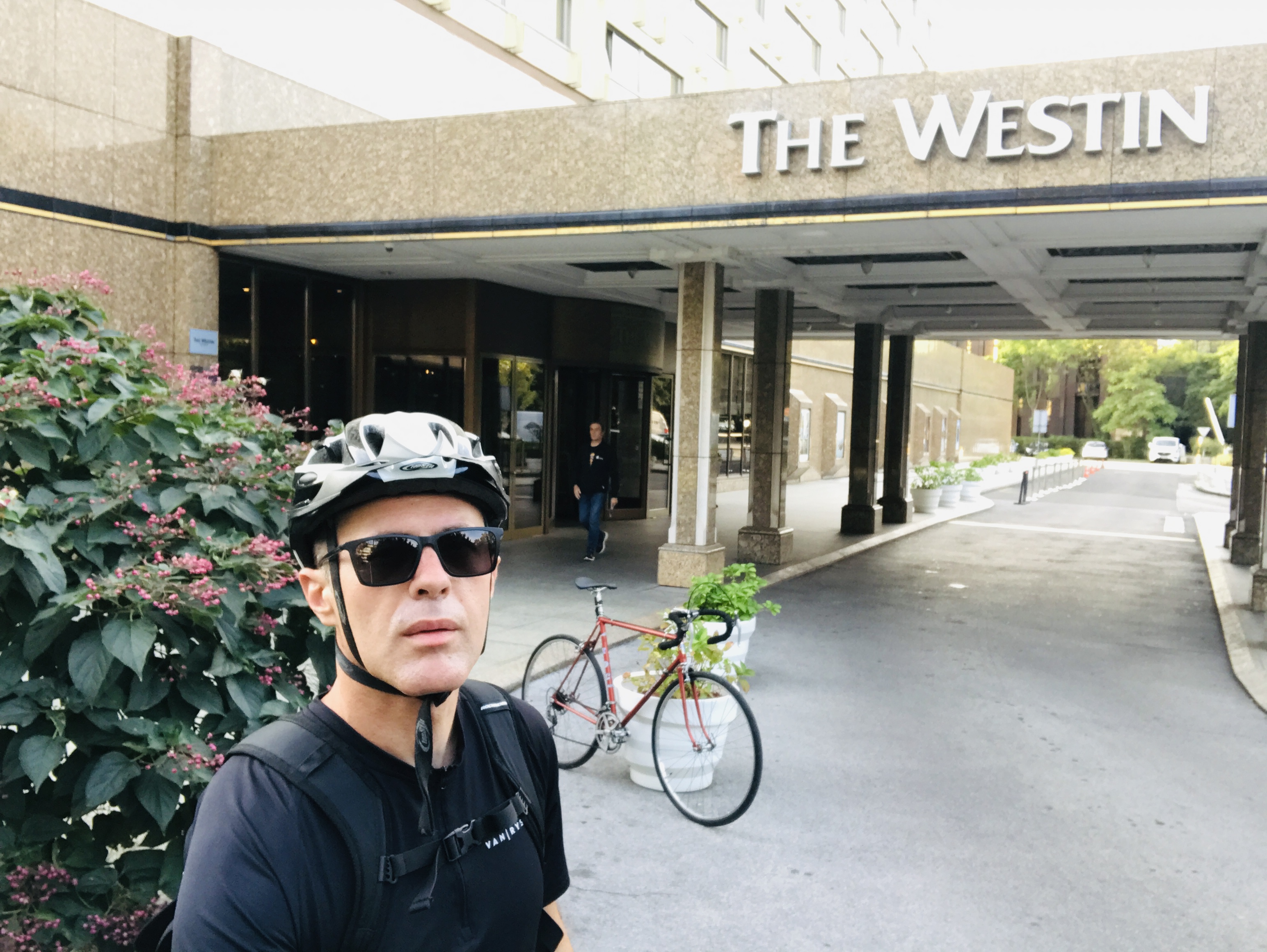
I have to say that the challenge exceeded all my expectations and that the summer of 2023 was one of my most active summers yet.
“A Haemophiliac Goes to Zagreb” was (and still is) a recreational project intended to encourage and spur haemophiliacs to lead a more active life, be it through sport, recreational activities, or in other ways. The purpose is also to draw attention to the importance of joint health in advanced haemophiliac arthropathies in patients with blood clotting disorders and the importance of muscle conditioning and physiotherapy. The project encourages the use of devices or apps for monitoring clotting factor levels, encouraging haemophiliacs to learn more about their rare disease.The goal is to achieve a better quality of life for all of us who suffer from haemophilia. I invite everyone who can to get on their bike – let’s cover new kilometres together for our global haemophilia community.
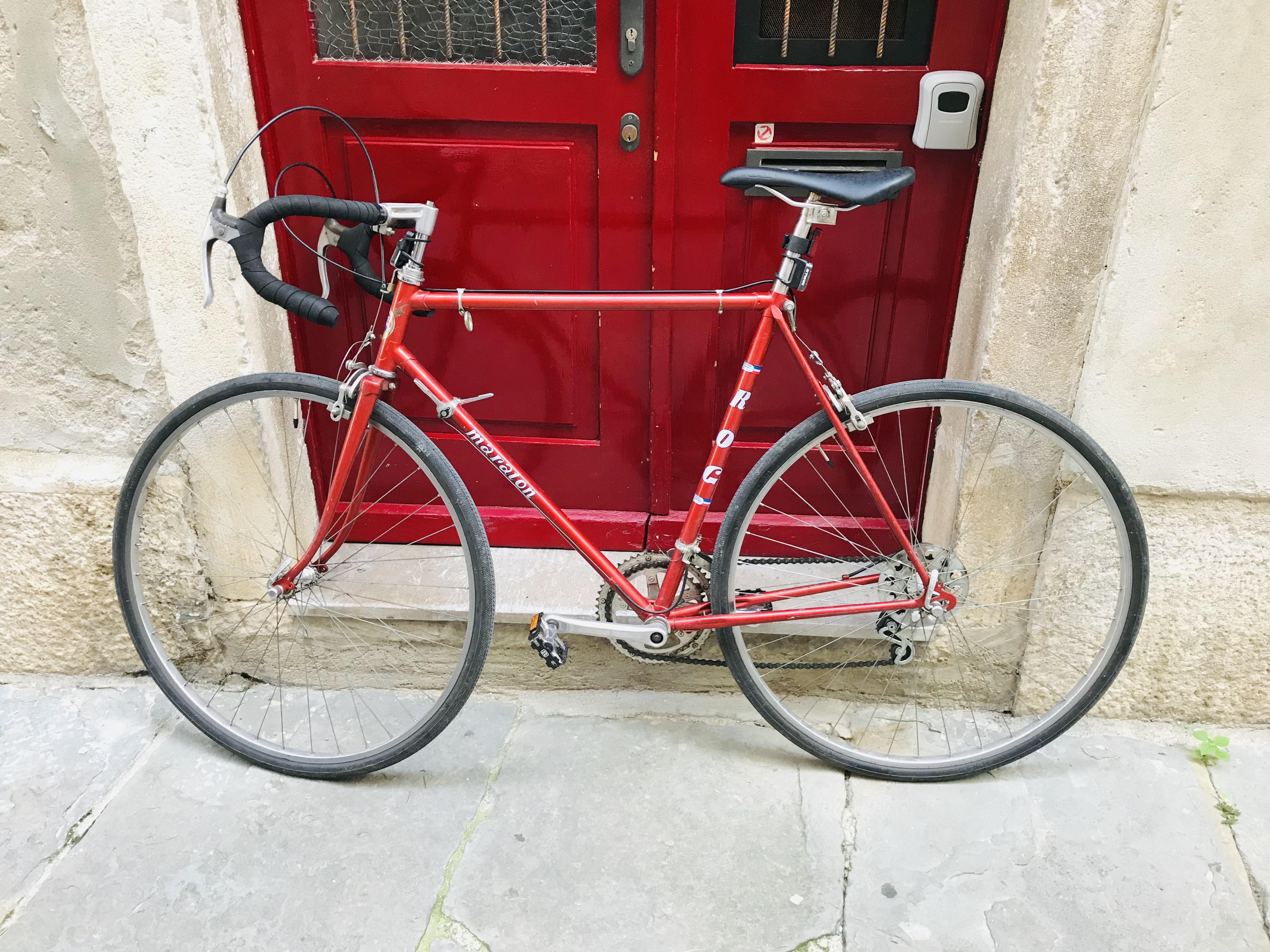
By cycling to Zagreb, I also wanted to promote the topics covered at this year’s European Haemophilia Consortium congress and support the efforts of the Croatian Haemophilia Society, which put in a lot of effort and work to make sure the congress was a resounding and well-promoted success.
Together with haemophilia – cycling forward.
RB/HaemophAmicus, 21 October 2023
